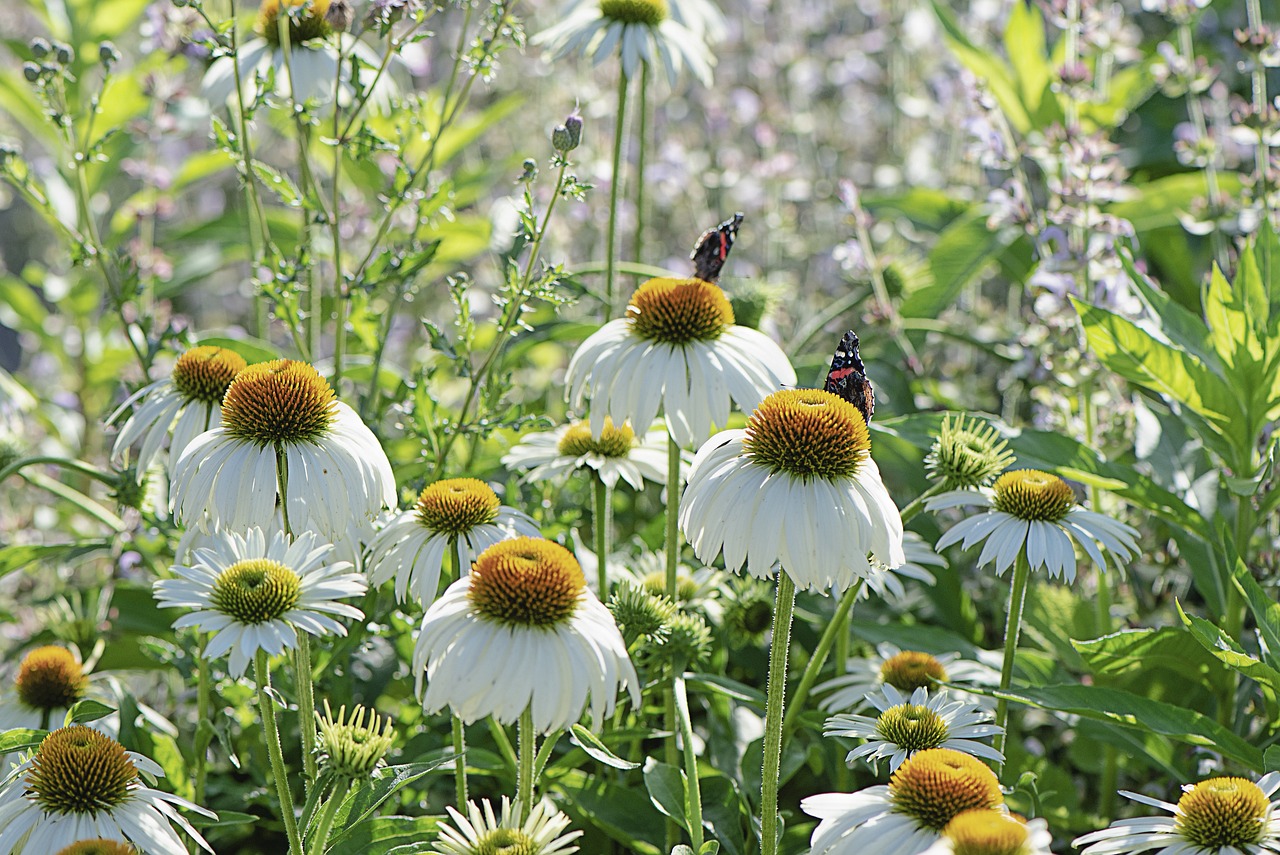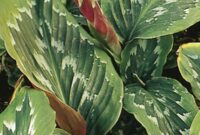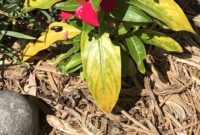Echinacea, often referred to as coneflower, is a garden favorite known for its striking beauty and numerous health benefits. Its daisy-like blooms and ability to attract pollinators make it a must-have for many garden enthusiasts.
But did you know that choosing the right companion plants can not only enhance the beauty but also the overall health of your Echinacea? In this article, we will introduce you to seven plant perfect partners that can help your Echinacea garden thrive.
The Benefits of Companion Planting
Before we explore the specific companion plants, it’s essential to understand why companion planting matters for your Echinacea and garden in general.
Improved Growth and Vigor
Companion planting offers more than just visual appeal; it can also enhance the growth and vitality of your Echinacea. Some companion plants provide essential nutrients, create shade, or offer structural support that can benefit your Echinacea.
This collaborative approach often results in healthier, more robust Echinacea plants with larger and more vibrant blooms.
Natural Pest Control
One of the remarkable advantages of companion planting is its role in natural pest control. Certain companion plants release chemicals or scents that deter common garden pests, reducing the need for chemical pesticides.
This not only helps protect your Echinacea but also contributes to a more eco-friendly and sustainable garden.
The Top 7 Plant Perfect Partners for Echinacea
Now that we understand why companion planting is beneficial, let’s meet the seven plant perfect partners that will make your Echinacea garden flourish.
Companion Plant #1: Purple Coneflower (Echinacea purpurea)
1. Meet Purple Coneflower
Our first companion plant is none other than another type of Echinacea, the Purple Coneflower (Echinacea purpurea). While it shares the same genus, it brings a distinct shade of purple to your garden.
2. Synergy with Echinacea
Purple Coneflower and traditional Echinacea varieties share similar requirements, making them ideal companions. They both attract pollinators such as bees and butterflies, creating a buzzing hub of activity in your garden.
3. Planting and Care Tips
- Planting: Ensure they receive full sun and well-draining soil. Space them about 18 to 24 inches apart to allow for adequate air circulation.
- Maintenance: Water them regularly, especially during dry spells, and deadhead spent blooms to encourage continuous flowering.
Companion Plant #2: Bee Balm (Monarda)
1. Get Acquainted with Bee Balm
Bee Balm, also known as Monarda, is a fragrant and colorful perennial that complements Echinacea beautifully. With its vibrant red, pink, or purple blooms, bee balm adds a splash of color to your garden.
2. Harmonizing with Echinacea
Bee balm is a magnet for pollinators, just like Echinacea. Together, they create a haven for bees, butterflies, and hummingbirds. Additionally, bee balm’s aromatic foliage can help deter aphids and other garden pests.
3. Planting and Maintenance Guidance
- Planting: Choose a sunny spot with well-draining soil. Space bee balm plants about 18 inches apart to allow for good air circulation.
- Care: Keep the soil consistently moist, especially during dry spells. Deadhead spent flowers to promote continuous blooming.
(Continue this format for the remaining five plant perfect partners.)
In the sections that follow, we’ll introduce you to the remaining plant perfect partners for your Echinacea, helping you create a vibrant and thriving garden. So, let’s get started with these fantastic plant partnerships!
Companion Plant #3: Black-Eyed Susan (Rudbeckia hirta)
1. Meet Black-Eyed Susan
Black-Eyed Susan is a delightful wildflower known for its golden-yellow petals and dark, prominent centers. This native North American plant adds a burst of sunshine to your garden.
2. Synergy with Echinacea
Black-Eyed Susan pairs beautifully with Echinacea, creating a dynamic duo that attracts a variety of pollinators. Their combined display of vibrant colors and nectar-rich blooms is a sight to behold.
3. Planting and Maintenance Guidance
- Planting: Choose a sunny location with well-draining soil. Space Black-Eyed Susan plants about 12 to 18 inches apart. These hardy plants can thrive in various soil types.
- Maintenance: Keep the soil evenly moist during the growing season, and deadhead spent flowers to encourage continuous flowering. Black-Eyed Susan is relatively low-maintenance.
Companion Plant #4: Russian Sage (Perovskia atriplicifolia)
1. Get Acquainted with Russian Sage
Russian Sage is a drought-tolerant perennial known for its aromatic silver-gray foliage and airy spikes of lavender-blue flowers. Its elegant appearance makes it an excellent companion for Echinacea.
2. Harmonizing with Echinacea
Russian Sage provides a beautiful contrast to Echinacea with its silver foliage and cool-toned blossoms. It’s also a favorite of bees and butterflies, making it a valuable addition to a pollinator-friendly garden.
3. Planting and Maintenance Guidance
- Planting: Choose a sunny spot with well-drained soil. Russian Sage prefers slightly alkaline conditions. Space plants about 2 to 3 feet apart to allow for their mature size.
- Maintenance: Once established, Russian Sage is drought-tolerant and relatively low-maintenance. Prune it in early spring to encourage new growth and remove dead stems.
Companion Plant #5: Agastache (Hyssop)
1. Meet Agastache
Agastache, commonly known as hyssop, is a fragrant and attractive perennial that pairs wonderfully with Echinacea. Its spiky clusters of tubular flowers come in various shades, including purple, pink, and orange.
2. Synergy with Echinacea
Agastache is a favorite of hummingbirds, butterflies, and bees, making it an excellent companion for Echinacea. The combination of these two nectar-rich plants creates a pollinator paradise in your garden.
3. Planting and Maintenance Guidance
- Planting: Choose a sunny location with well-draining soil. Space Agastache plants about 12 to 18 inches apart. They thrive in conditions with good air circulation.
- Maintenance: Keep the soil evenly moist but not waterlogged. Deadheading spent flowers encourages continuous blooming and prevents self-seeding.
Companion Plant #6: Daylilies (Hemerocallis)
1. Get Acquainted with Daylilies
Daylilies are renowned for their vibrant, trumpet-shaped flowers that come in a wide range of colors. They’re known for their adaptability and are a fantastic companion for Echinacea.
2. Harmonizing with Echinacea
Daylilies and Echinacea create a harmonious partnership with their colorful and long-lasting blooms. Both plants are low-maintenance and thrive in similar growing conditions.
3. Planting and Maintenance Guidance
- Planting: Choose a sunny to partly shaded location with well-drained soil. Space daylilies about 18 inches apart to allow for their mature size.
- Maintenance: Daylilies are generally low-maintenance but benefit from regular watering during dry spells. Removing spent blooms enhances their appearance and encourages reblooming.
Companion Plant #7: Catmint (Nepeta)
1. Meet Catmint
Catmint, a member of the mint family, is a charming perennial known for its aromatic foliage and clusters of delicate lavender-blue flowers. This versatile plant is an excellent choice to complement your Echinacea.
2. Synergy with Echinacea
Catmint is a pollinator magnet, attracting bees and butterflies to your garden. When paired with Echinacea, it creates a vibrant and buzzing haven for these beneficial insects.
3. Planting and Maintenance Guidance
- Planting: Select a sunny location with well-draining soil for your catmint. Space the plants about 18 to 24 inches apart, considering their mature size.
- Maintenance: Catmint is relatively low-maintenance. Keep the soil evenly moist during the growing season, and trim back spent blooms to promote continuous flowering. Be prepared for the occasional visit from neighborhood cats who may find catmint irresistible.
Conclusion
Incorporating these seven plant perfect partners into your Echinacea garden can elevate its beauty and create a thriving ecosystem.
By attracting pollinators and enhancing overall garden health, companion planting offers a holistic approach to gardening that benefits both plants and wildlife.
As you plan your garden, consider the unique qualities of each companion plant and how they can complement your Echinacea. Whether you’re aiming for a burst of color, improved growth, or natural pest control, these plant partnerships have got you covered.
With these fantastic companions by your side, your Echinacea garden is poised for success. So, roll up your sleeves, get your gardening tools ready, and watch your garden flourish with the magic of companion planting. Happy gardening!



